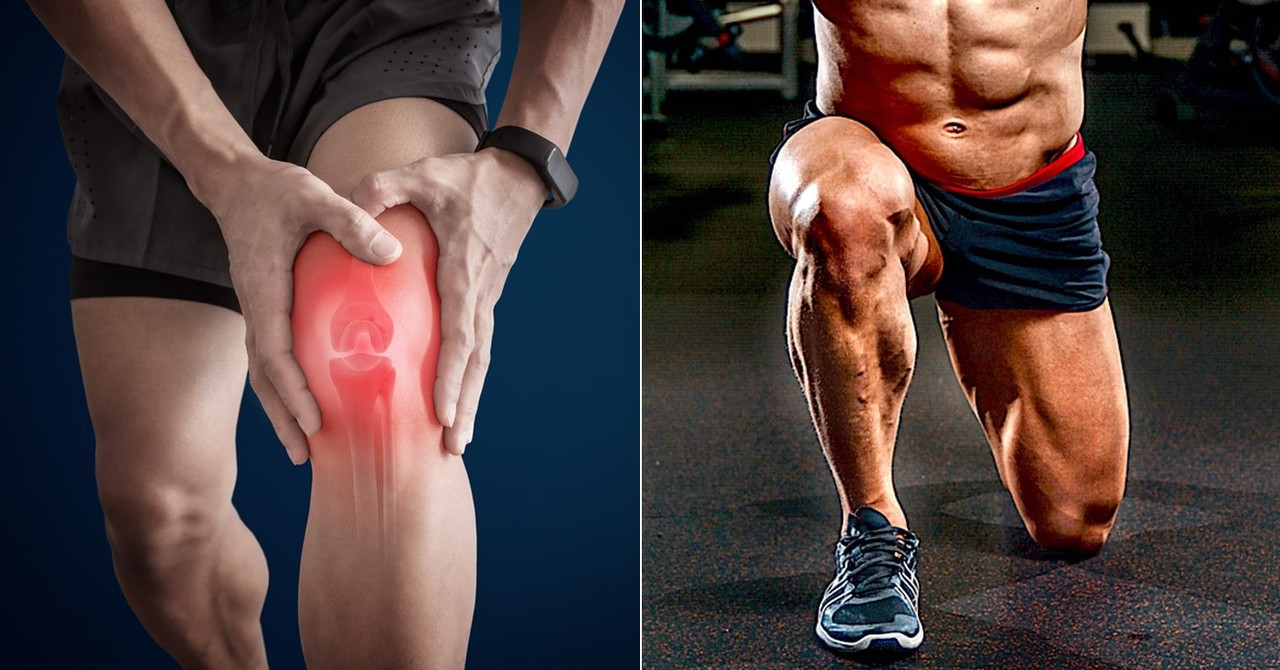Richardbrown
Guest

There are many people who have joint pain or discomfort. Joint pain is very common. About one-third of individuals in a national survey said they had had joint discomfort in the previous 30 days.
Joint pain can affect any area of your body, from your ankles and feet to your shoulders and wrists, with knee pain being the most prevalent complaint, followed by shoulder and hip discomfort. If you've ever had joint discomfort, you probably agree that it can significantly lower your quality of life. You don't want to move when it hurts to do so.
Knowing what can cause joint discomfort is the first step in avoiding and preventing it.
THE 5 MAIN REASONS GYM GOERS EXPERIENCE JOINT PAIN
OVERUSE
Too much exercise too soon leads to a lot of overuse issues. However, experienced exercisers who don't give themselves enough time to relax and recover can also suffer from overuse problems.
Don't forget that as you exercise, your body is being destroyed. This is because your muscles won't be fully recovered, leaving them worn out and damaged to the point where your tendons and joints will have to work harder.
If you don't rest your muscles properly or give them enough time to recuperate, your body will wear down more quickly than it should, which will eventually result in joint discomfort.
Giving your body what it requires after working out is important for your results and general health for a number of reasons, one of which is this. Additionally, work on getting your body the quality rest it needs by getting sleep!
STRESS
There's no getting away from it in today's society! Everybody has it.
Your immune system, however, is less able to adequately control its inflammatory reaction when you are under excessive stress. Joint pain and stiffness are just a few of the health problems that can develop as inflammation grows inside your body.
MUSCULAR IMBALANCES
Your joints are surrounded by muscles that allow you to move and carry out tasks like squatting a heavy load or brushing your teeth.
Joint discomfort can result from certain muscles controlling the area around the joint, frequently as a result of using one muscle more intensely than the opposing muscle (example: hamstring vs. quads). Together, these muscles enable smooth, balanced movement.
Your joints could be subjected to additional stress as a result of compensatory overuse and poor movement patterns. Imbalances are frequently brought on by certain muscles being hyperactive or "tight." The joint to which these muscles are linked may be put under stress if they act excessively and often.
These problems can be resolved by finding a decent mobility and stretching regimen for before and after your exercise.
AGING
As you age, sore joints grow more frequent because the cartilage and connective tissues alter, making the joint less durable and more prone to injury.
Joints also become more rigid and brittle as a result of the connective tissue within ligaments and tendons becoming more so.
The range of motion of joints is also restricted by this modification.
OTHER MEDICAL CONDITIONS
Osteoarthritis, rheumatoid arthritis, psoriatic arthritis, bursitis, gout, lupus, and many other diseases and disorders can cause painful joints.
Contact your primary care physician if you believe you have a medical problem that is causing joint pain, stiffness, or discomfort.
Now that we are aware of some of the most typical causes of joint pain, a crucial question arises. How can joint discomfort be avoided while exercising?
4 STRATEGIES TO AVOID JOINT PAIN
Warm-up and Cool Down.
Spend the time necessary to run your body through a proper warm-up and cool-down as part of every workout, as I previously advised.
Increased range of motion and adequate joint warming will help reduce stiffness and lower your risk of injury. After working out, take some time to stretch and cool down to avoid having too tight muscles pushing on your joints and causing pain.
Well-Balanced Exercise Program.
Having a balanced approach to your training—training your body from head to toe—is one of the best methods to prevent muscle imbalances.
Focusing on compound motions and limiting isolation movements is a simple technique to make sure you are on the right road.
Reducing Inflammation.
You should achieve this with your diet plan and the right supplements.
Inflammation can be reduced in your body and joints by eating leafy green vegetables, superfoods high in antioxidants, and an Omega-3-rich diet.
Joint pain can be decreased as a result of this reduction in inflammation, which can also enhance gastrointestinal health, cardiovascular health, and even brain function.
Allowing time for rest and recovery.
Everyone will require varying amounts of sleep. This is due to the fact that various variables, like age, sleep habits, stress levels, training type, intensity of training, etc., are involved.
But weariness, bodily aches, and of course joint discomfort are a few strong symptoms that you might need to take additional time to heal.
Whether you've had joint discomfort for a short while or a while... It's not fun at all, I think we can all agree on that. Joint pain makes it difficult to carry out regular tasks, let alone get in a terrific workout!
The good news is that you may take steps to avoid joint pain in the first place now that you are aware of the common reasons why gym enthusiasts like yourself experience joint pain.
And if you do begin to experience joint discomfort, there are steps you can do to help relieve it, including dietary adjustments, supplements, and, if necessary, seeking medical care.


 Please Scroll Down to See Forums Below
Please Scroll Down to See Forums Below 










